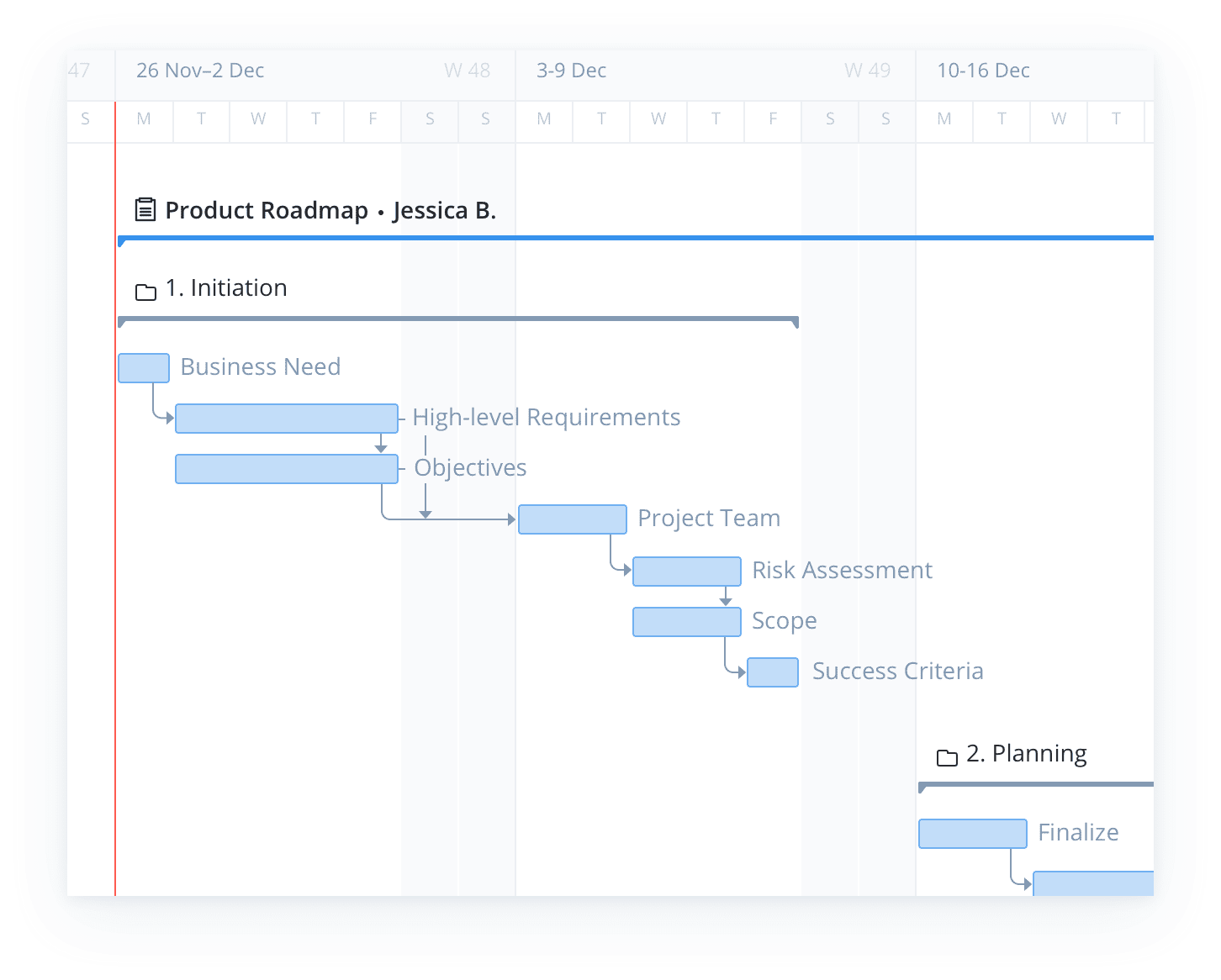What Is an Agile Roadmap?
Within an Agile team, the Product Owner is often responsible for managing not only the product backlog but defining the project’s vision and priorities. One of the ways they define the project’s vision is with an Agile product roadmap.
Agile roadmap is a long-term, high-level overview of the product’s expected evolution. It should not be confused with the backlog as the roadmap is not where individual project tasks are planned. It is rather where vision meets strategy.
Benefits of an Agile roadmap
- Providing a high-level overview for stakeholders
- Giving teams insight into priorities and timelines as context for day-to-day tasks
- Explaining the project’s importance — both for the organization and the user/customer
- Articulating long-term strategy
Types of Agile roadmaps
In a project management setting that is hyperfocused on individual tasks, a product roadmap is the big picture planning needed in order to focus teams, get stakeholder buy-in, and anticipate growth. Two popular types of Agile roadmaps include progress-based and time-based roadmaps.
Time-based roadmap
As its name suggests, a time-based roadmap focuses on how the project will evolve over a certain period of time. This can be looked at in weeks, months, quarters, or even years. Stakeholders may find it especially valuable because it clarifies expected timelines and key releases without getting bogged down into day-to-day processes.

Progress-based roadmap
A progress-based roadmap takes a “to-do” → “in progress” → “complete” approach to road mapping and is often represented through a Kanban-like board. It focuses more on making progress on critical features and releases, as opposed to meticulously following timelines or predetermined time frames.
A roadmap is an important piece of documentation, but it should not be treated as something set in stone. Because Agile’s values and principles emphasize adapting to change, the roadmap can, and should, evolve based on what is learned in each iterative cycle as the project progresses.
How to create an Agile product roadmap
To build an Agile product roadmap that takes a long-lens view of your project, first, articulate your vision. What value will be delivered to customers and what are the project’s main priorities, goals, and key objectives? Establish project KPIs by determining important success indicators and milestones.
If possible, tailor your Agile product roadmap to its intended audience. The same roadmap you present to the project team will likely need to have more detail than the one you present to other stakeholders who simply need to understand the high-level strategy, goals, and general time frames associated with the project.
To get started with an Agile product roadmap of your own, try Wrike’s product roadmap template. It’s an easy-to-use, essential part of your Agile toolkit. Create realistic, up-to-date, and effective roadmaps that communicate your product vision to your team and stakeholders.

Artem Gurnov
Artem is a Director of Account Development at Wrike. He previously held the role of Project Manager, overseeing a team of customer success managers (CSMs). Over the years of building teams and scaling business processes, he has successfully deployed multiple projects, from automating client outreach to setting up work prioritization tools for sales reps and CSMs.


